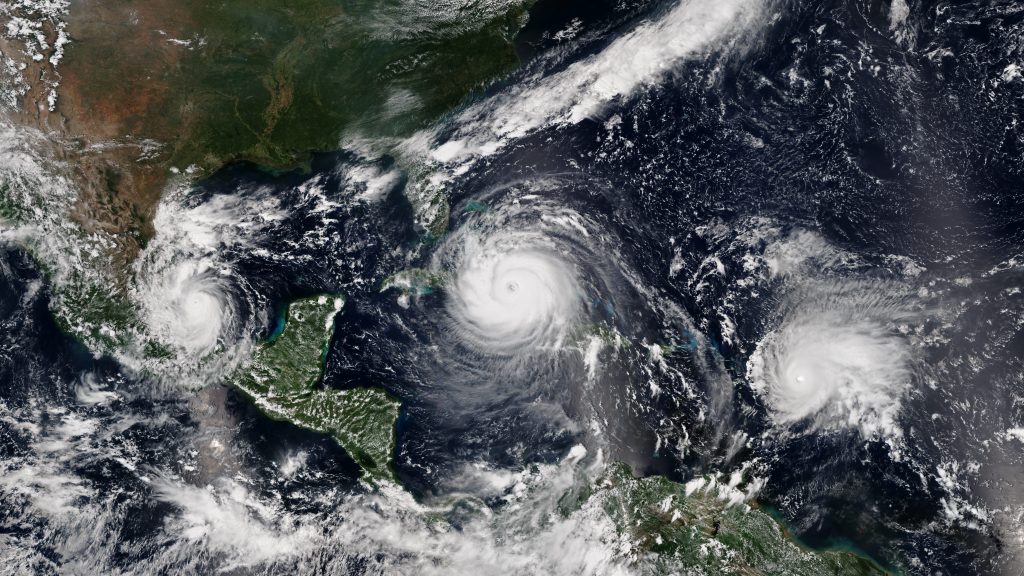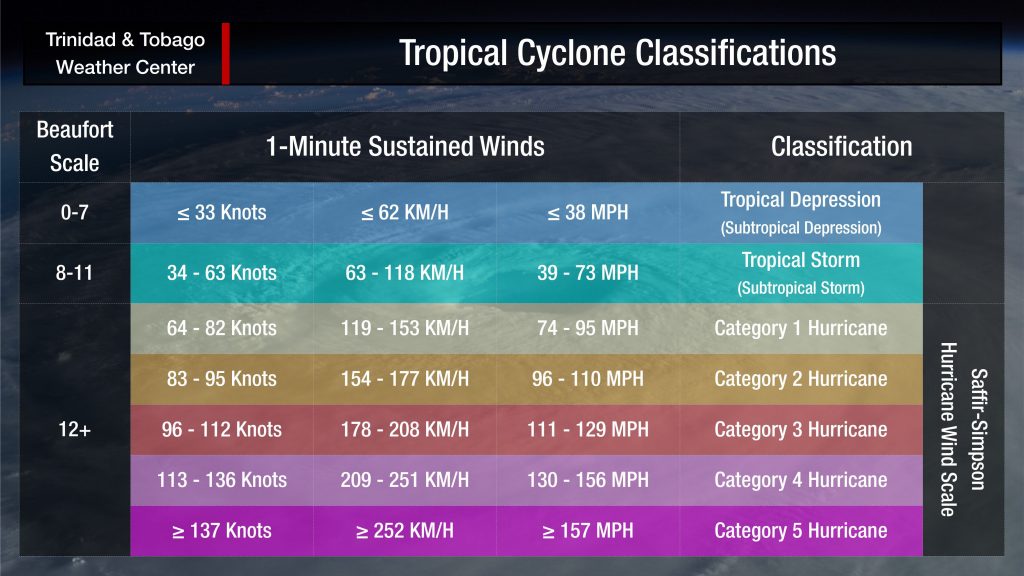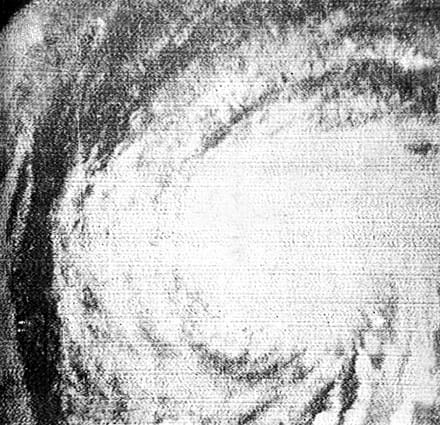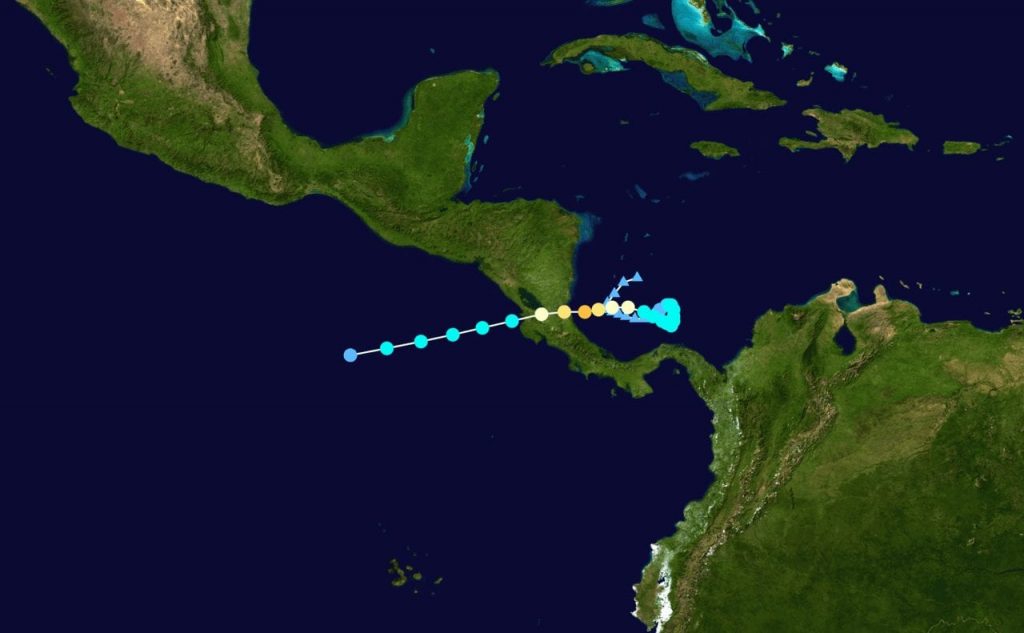Tropical cyclone names in the Atlantic vary year to year, and the list of names is rotated every six years. But where do the names come from, and who chooses them?
Why name tropical cyclones?

According to the National Hurricane Center (NHC), “experience shows that the use of short, distinctive names in written as well as spoken communications are quicker and less subject to error than the older, more cumbersome latitude-longitude identification methods.”
We’ve actually seen this work in numbering tropical waves as it moves across T&T over the last few years.
The NHC continues, “these advantages are especially important in exchanging detailed storm information between hundreds of widely scattered stations, coastal bases, and ships at sea.”
The use of easily remembered names greatly reduces confusion when two or more tropical storms occur at the same time. This is also true of tropical waves when T&T experiences back-to-back waves and inclement weather associated with one or both.
In the past, confusion and false rumors have arisen when storm advisories broadcast from radio stations were mistaken for warnings concerning an entirely different storm located hundreds of miles away.
When (and how) is a tropical cyclone named?

In all basins, when a tropical cyclone reaches tropical storm strength, the respective Meteorological Organizations in charge of that area (National Hurricane Center for the Atlantic and Eastern Pacific Basins) will name the tropical system.
Note that tropical cyclones can form, such as tropical depressions, and never be named as it never reaches tropical-storm-strength. In addition, in post-season analysis, tropical cyclones may be added and will not be named.
The names alternate between male and female for each year and follow alphabetical order (A through W). Forecasters skip over the letters Q, U, X, Y, and Z due to the very few names that begin with these letters.
According to the World Meteorological Organization (WMO), there is a strict procedure to determine a list of tropical cyclone names in an ocean basin by the Tropical Cyclone Regional Body responsible for that basin at its annual/biennial meeting.
The regional bodies (hurricane committees for respective regions) determine a predesignated list of hurricane names for six years separately at its annual meeting. This means the list for 2022 will be reused in 2028. These names are proposed by members in that region, including national meteorological and hydrological services in Northern and Central America as well as the Caribbean.
The WMO also noted that tropical cyclones/hurricanes/typhoons are not named after any particular person. The names selected are those that are familiar to the people in each region. Storms are named for people to easily understand and remember the tropical cyclone/hurricane/typhoon in their region, thus facilitating disaster risk awareness, preparedness, management, and reduction.
| 2022 | 2023 | 2024 | 2025 | 2026 | 2027 |
| Alex Bonnie Colin Danielle Earl Fiona Gaston Hermine Ian Julia Karl Lisa Martin Nicole Owen Paula Richard Shary Tobias Virginie Walter | Arlene Bret Cindy Don Emily Franklin Gert Harold Idalia Jose Katia Lee Margot Nigel Ophelia Philippe Rina Sean Tammy Vince Whitney | Alberto Beryl Chris Debby Ernesto Francine Gordon Helene Isaac Joyce Kirk Leslie Milton Nadine Oscar Patty Rafael Sara Tony Valerie William | Andrea Barry Chantal Dexter Erin Fernand Gabrielle Humberto Imelda Jerry Karen Lorenzo Melissa Nestor Olga Pablo Rebekah Sebastien Tanya Van Wendy | Arthur Bertha Cristobal Dolly Edouard Fay Gonzalo Hanna Isaias Josephine Kyle Leah Marco Nana Omar Paulette Rene Sally Teddy Vicky Wilfred | Ana Bill Claudette Danny Elsa Fred Grace Henri Imani Julian Kate Larry Mindy Nicholas Odette Peter Rose Sam Teresa Victor Wanda |
The History of Hurricane Names

In the beginning, storms were named arbitrarily. An Atlantic storm that ripped off the mast of a boat named Antje became known as Antje’s hurricane. Then the mid-1900s saw the start of the practice of using feminine names for storms.
In the pursuit of a more organized and efficient naming system, meteorologists later decided to identify storms using names from a list arranged alphabetically. Thus, a storm with a name that begins with A, like Anne, would be the first storm to occur in the year. Before the end of the 1900s, forecasters started using male names for those forming in the Southern Hemisphere.
Since 1953, Atlantic tropical storms have been named from lists originated by the National Hurricane Center. They are now maintained and updated by an international committee of the World Meteorological Organization. The original name lists featured only women’s names. In 1979, men’s names were introduced, and they alternate with the women’s names. Six lists are used in rotation. Thus, the 2020 list will be used again in 2026.
The six lists below are used in rotation and re-cycled every six years, i.e., the 2020 list will be used again in 2026, barring any retired names that will need to be replaced.
The only time that a tropical cyclone’s name is retired is if a storm is so deadly or costly that the future use of its name on a different storm would be inappropriate for obvious reasons of sensitivity. If that occurs, then at an annual meeting by the committee (called primarily to discuss many other issues), the offending name is stricken from the list, and another name is selected to replace it.
There is an exception to the retirement rule, however. Before 1979, when the first permanent six-year storm name list began, some storm names were simply not used anymore. For example, in 1966, “Fern” was substituted for “Frieda,” and no reason was cited.
Below is a list of retired names for the Atlantic Ocean, Caribbean Sea, and the Gulf of Mexico. There are, however, a great number of destructive storms not included on this list because they occurred before the hurricane naming convention was established in 1950.
| 1955 Connie Diane Ione Janet | 1956 | 1957 Audrey | 1958 | 1959 | |||||
| 1960 Donna | 1961 Carla Hattie | 1962 | 1963 Flora | 1964 Cleo Dora Hilda | 1965 Betsy | 1966 Inez | 1967 Beulah | 1968 | 1969 Camille |
| 1970 Celia | 1971 | 1972 Agnes | 1973 | 1974 Carmen Fifi | 1975 Eloise | 1976 | 1977 Anita | 1978 Greta | 1979 David Frederic |
| 1980 Allen | 1981 | 1982 | 1983 Alicia | 1984 | 1985 Elena Gloria | 1986 | 1987 | 1988 Gilbert Joan | 1989 Hugo |
| 1990 Diana Klaus | 1991 Bob | 1992 Andrew | 1993 | 1994 | 1995 Luis Marilyn Opal Roxanne | 1996 Cesar Fran Hortense | 1997 | 1998 Georges Mitch | 1999 Floyd Lenny |
| 2000 Keith | 2001 Allison Iris Michelle | 2002 Isidore Lili | 2003 Fabian Isabel Juan | 2004 Charley Frances Ivan Jeanne | 2005 Dennis Katrina Rita Stan Wilma | 2006 | 2007 Dean Felix Noel | 2008 Gustav Ike Paloma | 2009 |
| 2010 Igor Tomas | 2011 Irene | 2012 Sandy | 2013 Ingrid | 2014 | 2015 Erika Joaquin | 2016 Matthew Otto | 2017 Harvey Irma Maria Nate | 2018 Florence Michael | 2019 Dorian |
| 2020 Laura Eta Iota | 2021 Ida |
What happens if we run out of names in one year?

In 2020, the record-breaking hurricane season exhausted the regular list of names, and for the second time in history, the Greek Alphabet was used. Prior to 2021, in the event that more than twenty-one named tropical cyclones occur in the Atlantic basin in a season, additional storms will take names from the Greek alphabet. This naming convention has been established by the World Meteorological Organization (WMO) Tropical Cyclone Programme.
However. the 2020 Atlantic Hurricane Season brought multiple shortcomings to light with the use of the Greek alphabet, such as that there was too much focus on how the Greek letters were used instead of reporting on the impacts of these tropical cyclones as well as the difficulty in properly retiring and replacing the Greek letter names of devastating storms.
Instead, as of 2021, if there are more than 21 named storms this season, subsequent storms will take names from an auxiliary list of names approved by the WMO.
A Crossover Event: Atlantic to East Pacific Tropical Cyclones (and vice versa)

What happens if a tropical cyclone from the Atlantic moves across Central America into the Pacific – or the other way around – will it keep its name?
Prior to 2000, storms were renamed after crossing from the Gulf of Mexico into the Eastern Pacific. At the 22nd hurricane committee in 2000, it was decided that tropical cyclones that moved from the Atlantic to the Eastern Pacific basin and vice versa would no longer be renamed.
The most recent tropical cyclone to complete this feat was Hurricane Otto in 2016.









